During the flower-power days of the 1960s, Donovan sang about “being mad about saffron” in his hit song
Mellow Yellow. Are we still mad about yellow in our gardens, and can it be mellow? Nature commonly uses yellow, with spring flowers like daffodils, forsythia and primroses, but can we use this bright color without its taking over?
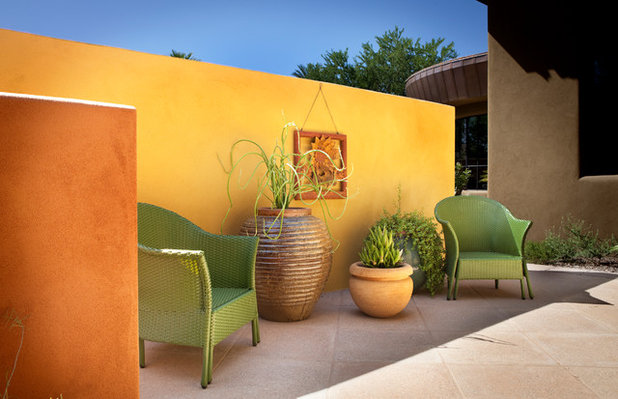
Bianchi Design
Yellow is the perfect color to bring warmth into a garden, especially in colder climates where gardeners embrace solar rays. A glowing feature wall in this garden brings light and warmth into the space. The yellow used is almost a primrose yellow, which shines without overpowering the garden scheme.
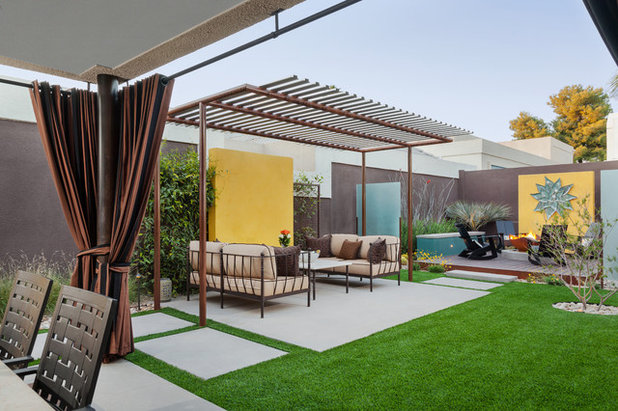
Coffman Studio
With much of this garden composed of neutral colors, like brown and taupe, the two squares of bright yellow bring it to life. Beware: Yellow can lead the eye through the garden, but too much will overpower it.
When choosing a color for a feature wall, it’s useful to remember that color changes enormously in different light conditions. In the morning sun, a yellow wall will look completely different than it does in evening shade; it will also alter through the year as the angle of the sun rises and falls, changing the quality of the light.
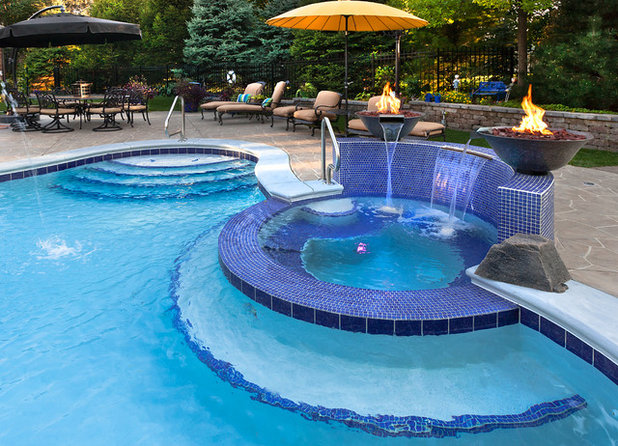
Sunset Pools and Spas, Inc.
There could be no better choice of color than the fresh yellow used for the parasol on this poolside terrace. The clear blue of the pool intensifies the yellow coloring, as the meeting of complementary colors strengthens both.
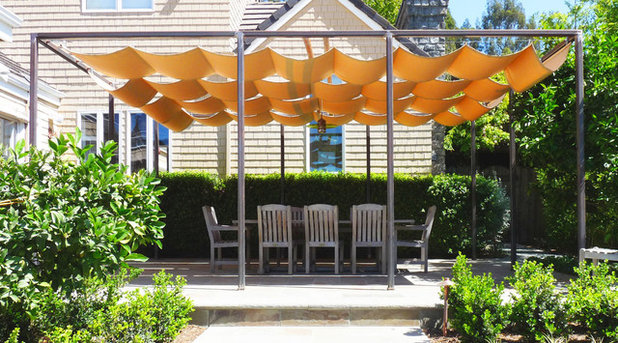
MAD Architecture
This simple yellow sunshade blends beautifully with the surounding foliage. Green and yellow-green sit next to yellow on the color wheel, which means foliage will tend to blend in with most yellows.
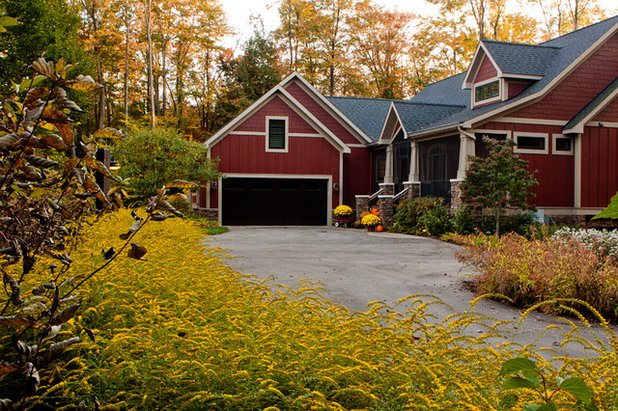
Blue Ridge Landscaping
With a strong color like yellow, it can be better to plant in swaths or masses rather than dotting plants through a mixed border — you only have to think of golden fields of sunflowers, or the acid-yellow flowers of rapeseed or even dandelions in abundance on a lawn.
The mass planting of the goldenrod (
Solidago)
here is stunning, especially as the cool gray of the drive brings out the strength of the acid-yellow flowers. The further touches of yellow in the autumnal foliage in the background and the bright yellow potted chrysanthemums at the front door show how different shades and tones of the color can bring a composition together.
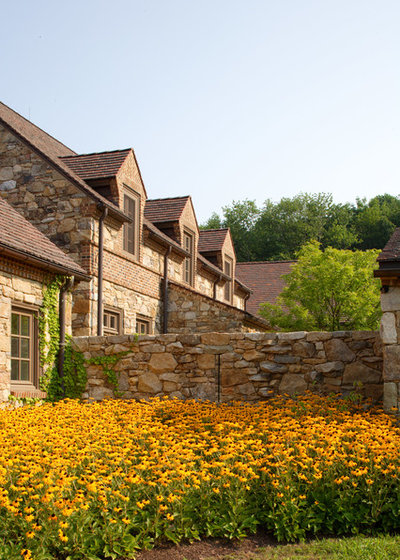
John Milner Architects, Inc.
Black-eyed Susan (
Rudbeckia), a native of North America, is perfect when mass planted, almost echoing the wheat fields of southern France that so captivated the painter van Gogh. He loved to contrast the brilliant color of the grains against the deep blue of dramatic crow-filled skies in his work.
The best Rudbeckia to grow is generally thought to be
Rudbeckia fulgida var.
sullivantii ‘Goldsturm’ (USDA zones 5 to 7), which is a hardy perennial, grows to 2 feet and loves full sun or partial shade; in those conditions it will flower for a couple of months in late summer and early autumn.
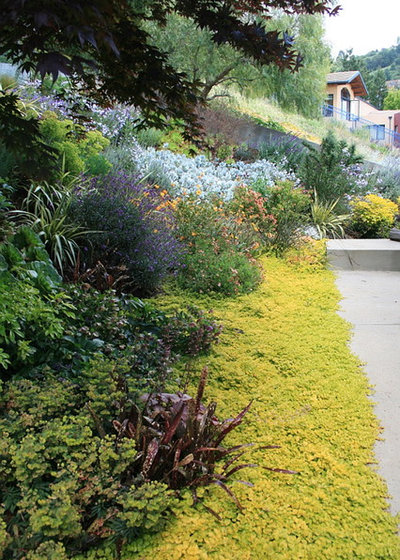
David Feix Landscape Design
Ground cover plants can be a great way to introduce bright color into the garden, and can be especially useful as a marker along the edge of a pathway. Yellow foliage is a perfect choice, as it reflects a lot of light and so will light the path edge long into the evening.
One of the best plants to use for this is golden creeping Jenny (
Lysimachia nummularia ‘Aurea’), shown here, with its fresh acid-yellow foliage.
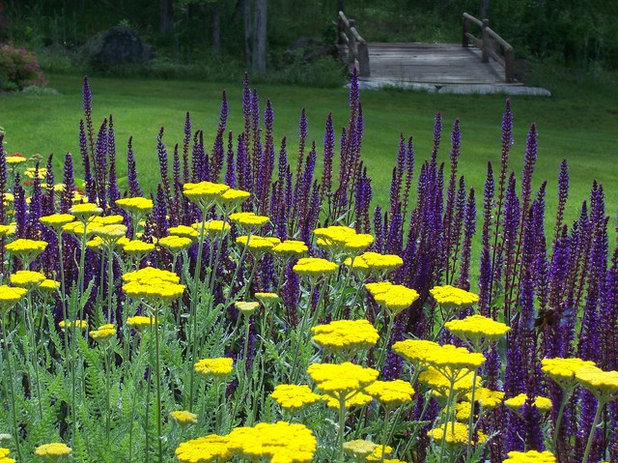
Dear Garden Associates, Inc.
Most people think of yellow and blue as a classic combination, yet purple and violet are equally complementary and bring out the best in the yellow — the coolness of blue and purple contrast the warmth of yellow.
Here we see how the deep gold of the fernleaf yarrow (
Achillea ‘Moonshine’) really stands out against the purple blue of the meadow sage (
Salvia x
sylvestris ‘Mainacht’).
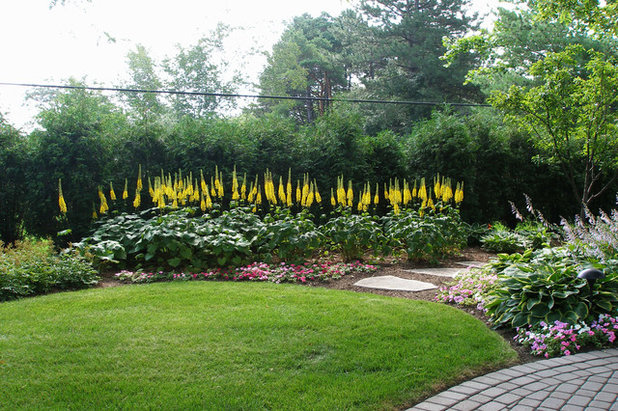
The Barn Nursery & Landscape Center Garden Center
Yellow brings any border to life. Like lights switched on, the flowers of
Ligularia ‘The Rocket’ (USDA zones 4 to 8) work wonders in the border here.
Ligularia ‘The Rocket’ is a great summer-flowering perennial; its flowers reach 4 to 6 feet in height. It needs to be grown in a moist, fertile soil in good light. If it’s grown in full sun, the leaves tend to droop in the heat of the day.
Browse guides to yellow flowers
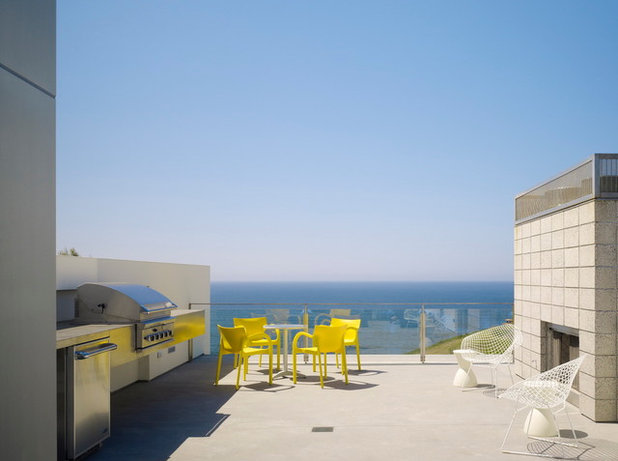
Ehrlich Yanai Rhee Chaney Architects
Perhaps, after all this, you’re still in the majority who wouldn’t rate yellow as a favorite color, feeling that it can be a bully in the garden, overpowering all those more delicate colors. Even if you don’t want dazzling feature walls or beds of glorious gold-flowering perennials, a touch of yellow, as with this dining set, can set your patio alive.





